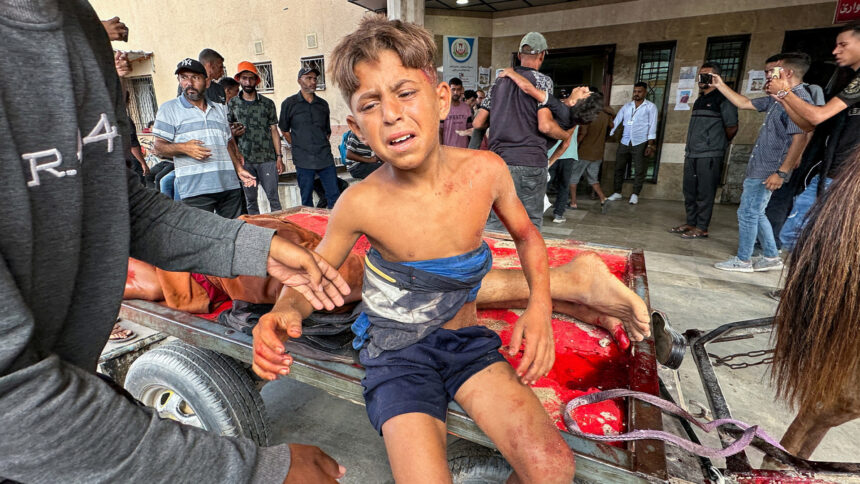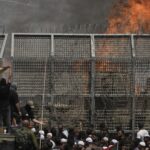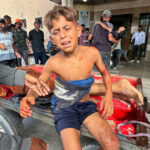In a devastating escalation of Gaza’s humanitarian catastrophe, dozens of Palestinian civilians were killed yesterday while desperately searching for food in Gaza City’s Shuja’iyya neighborhood. Witnesses report that Israeli forces opened fire on crowds gathering around aid trucks, turning what should have been a lifeline into another scene of bloodshed in a territory already crippled by starvation.
“We just wanted bread for our children,” said Mohammed Al-Najjar, a local resident who witnessed the tragedy. “People were running toward the trucks when the shooting started. There was no warning.”
The incident marks the deadliest food distribution violence since March, when over 100 Palestinians were killed in similar circumstances along Al-Rashid Street. According to medical officials at Al-Shifa Hospital, the majority of victims suffered gunshot wounds to the upper body, raising questions about the nature of the military response to civilians seeking humanitarian assistance.
This bloodshed occurs against the backdrop of what the United Nations has described as an “engineered famine.” Recent assessments from the World Food Programme indicate that 96% of Gaza’s population now faces acute food insecurity, with children particularly vulnerable to malnutrition and related diseases.
“What we’re witnessing is unprecedented in modern history,” explained Dr. Sarah Bennett, a humanitarian crisis expert with Médecins Sans Frontières. “The systematic obstruction of aid has created conditions where people are willing to risk death just to secure a day’s worth of flour or rice.”
The Israeli military issued a statement claiming armed militants had infiltrated the crowd, necessitating what they termed “precise fire to neutralize threats.” However, independent journalists on the ground and medical personnel report no evidence of armed individuals among the casualties.
Diplomatic pressure continues to mount as the death toll in Gaza approaches 40,000 since October 2023. Canadian officials joined international calls for unrestricted humanitarian access, with Foreign Affairs Minister emphasizing that “blocking food aid constitutes a violation of international humanitarian law.”
Economic analysts tracking the crisis estimate Gaza’s infrastructure damage now exceeds $18.5 billion, with critical services like water treatment, electricity, and healthcare operating at less than 15% capacity. The long-term economic implications extend beyond immediate humanitarian concerns, threatening regional stability.
Despite multiple ceasefire proposals and UN Security Council resolutions demanding unimpeded aid access, implementation remains elusive. Meanwhile, aid organizations report that even approved humanitarian convoys face hours of delays at checkpoints, with perishable food often spoiling before reaching distribution points.
As night falls in Gaza, families continue the impossible calculation of risk versus survival. “We are being forced to choose between starving slowly or risking death for food,” said Fatima Al-Haddad, a mother of four from northern Gaza. “What choice is that for any human being?”
As the international community witnesses this unfolding catastrophe, we must ask: At what point does our collective failure to ensure basic human necessities for Gaza’s civilian population become complicity in their suffering?





















